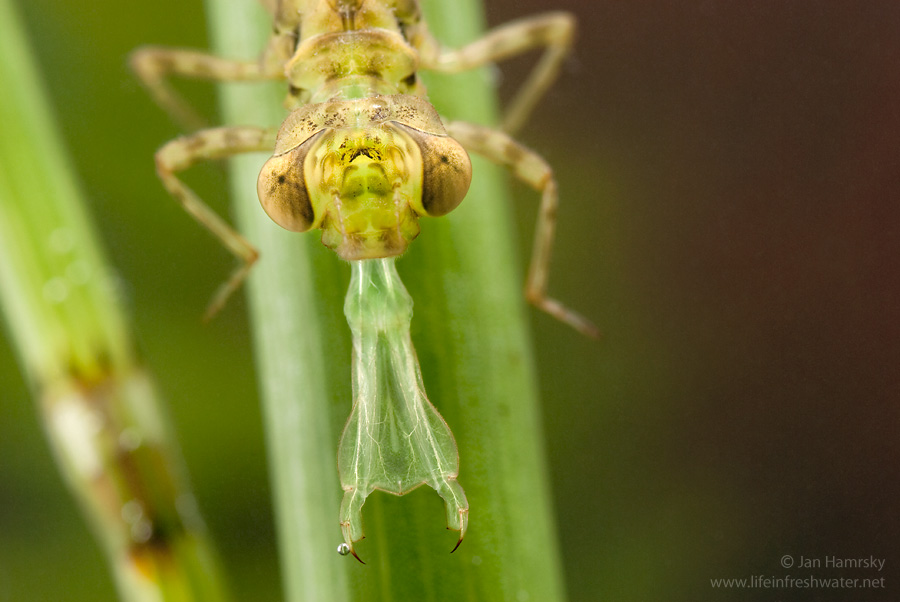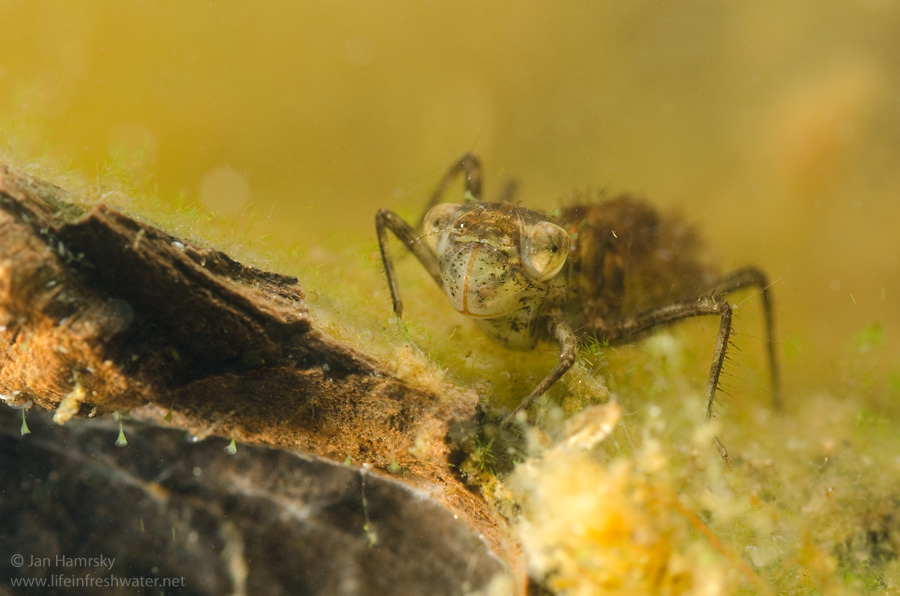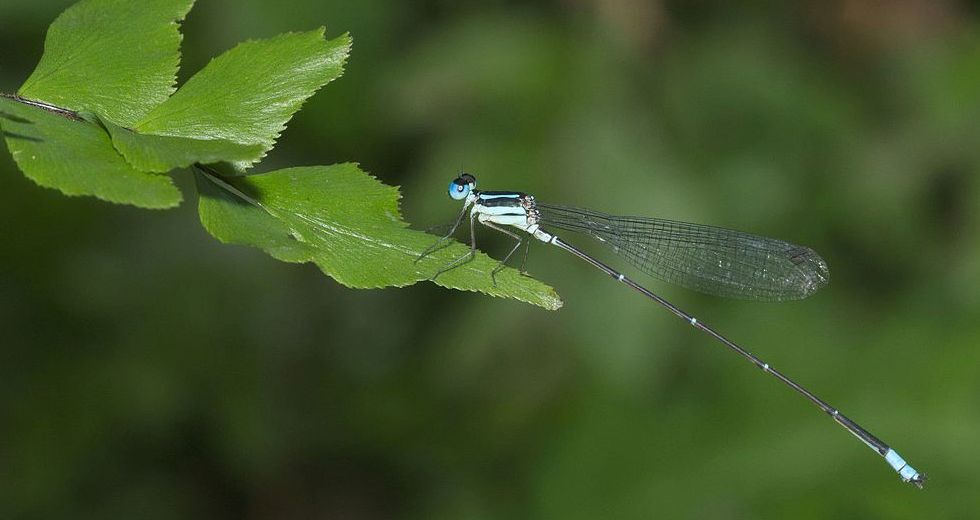During the total lifespan of an odonate, from egg to death, it spends the majority of its time as an aquatic larva (more appropriately called as nymph) feeding and growing in freshwater habitats. In temperate regions, the nymph will take 2 to 4 years to complete its developmental stages before finally molting into winged forms (otherwise termed as imagines). In tropical regions, nymphs of most species will complete their larval stages within a single year.

The odonate nymph is a sophisticated predator. They are voracious hunters and feed on any moving and seizable prey including their own kind. Cannibalism is very common among odonate larvae. Last instar larvae of bigger species are known to catch small fishes, tadpoles and even freshly emerged adults of their own species.
Anatomically, the nymphs and imagines are more or less similar; that is like adults, the body of larvae also consists of head, thorax and abdomen with ten segments. The head has compound eyes, three ocelli and the antennae. In the earlier instars, there will be only seven ommatidia per eye, the number of which will increase during the larval development.

The most unique feature of the nymph is their extendable labium (this is absent in the adults). It is the principal weapon of the larvae for predation. The labium consists of four movable parts; namely postmentum, prementum and two labial palps. While resting, the labium is folded backward under the body. The mechanism of operation of the labium is highly interesting. The ejection of the labium is mediated by hydraulic pressure initiated by contraction of abdominal muscles and closure of the anal pyramid. While building up pressure, the labium is locked into place by muscles within the labium. Relaxation of these muscles induces an explosive protraction, which lasts between 15 and 40 ms. The retraction of the labium is mainly achieved by muscular contraction. In the super families, Cordulegastroidea and Libelluloidea, the labium is shovel or spoon shaped covering parts of the face. In all other odonates, the labium is forceps like.
The thorax consists of three pairs of legs and in later stages, wing sheets. The abdomen has ten segments like that of the adults. According to families, the abdomen may be cylindrical, dorso-ventrally flattened, or even rounded. The shape of the abdomen is determined by the micro-habitat occupancy.
According to species and micro-habitat types in which they occur, the larvae can generally be grouped into four categories. The Claspers (larvae of many running water Aeshnidae) press and secure their body to a substrate; the Sprawlers (most Zygoptera and many Libellulidae) use their long legs to support the body on or in submerged vegetation; the Hiders (many Macromiidae, Corduliidae, Libellulidae and some Gomphidae) cover their body with debris or sit in cavities between stones; and the Burrowers (all Cordulegastridae, Chlorogomphidae, most Gomphidae and some Libellulidae) dig and hide in the sediment. These four categories are not distinct groups as intermediate forms are also present.

Aeshnidae 
Platycnemididae 
Libellulidae 
Gomphidae
Photographs of nymphs: © Jan Hamrsky, used with permission
 Society for Odonate Studies
Society for Odonate Studies